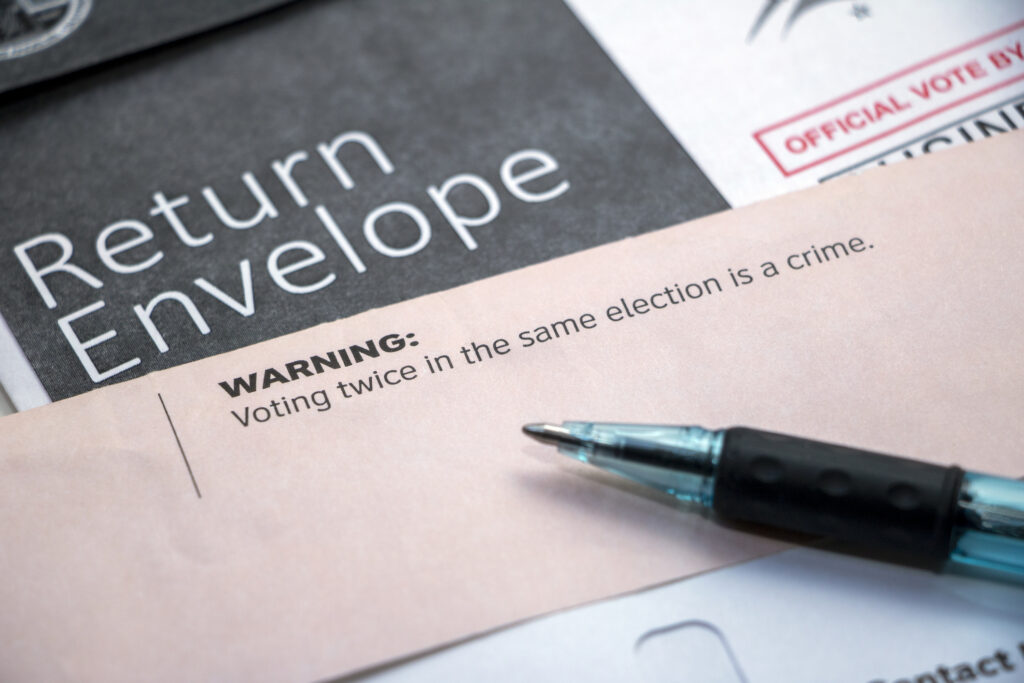In November and December of 2023, The Heartland Institute and Rasmussen Reports conducted a landmark survey of voters, which former President Donald Trump called “the biggest story of the year” and “the most important poll released in the last 20 years.” According to the results of the survey, a massive number of voters who cast ballots by mail admitted to committing at least one form of voter fraud in the 2020 election.
Some of the most important findings from the poll include:
- Seventeen percent of mail-in voters admitted that in 2020 they voted in a state where they are “no longer a permanent resident.”
- Twenty-one percent of mail in voters admitted that they f illed out a ballot for a friend or family member.
- Seventeen percent of mail-in voters said they signed a ballot for a friend or family member “with or without his or her permission.”
- Nineteen percent of mail-in voters said that a friend or family member filled out their ballet, in part or in full, on their behalf.
Immediately following the publication of the poll, several of Heartland’s analysts, myself included, reported that when taken together, the results of the 2023 Heartland/Rasmussen survey suggest that one in-five mail-in ballots cast in the 2020 presidential election were likely fraudulent. As shocking as it might sound, this was a conservative estimate, because, among other reasons, our initial analysis did not include the most comprehensive set of data from Rasmussen’s survey. We settled on the “one-in-five” figure because one of the fraud questions on its own yielded a result of 21 percent, creating a floor for mail-in fraud in the election.
In a subsequent, comprehensive report, published in January 2024, Heartland’s Jack McPherrin, Chris Talgo, Donald Kendal, James Taylor and I published a more detailed study about the Heartland/ Rasmussen voter fraud survey. After receiving the raw survey data from Rasmussen and engaging in a thorough review, we were able to determine that the poll showed more fraud than we initially reported, a conclusion that has since been confirmed by Rasmussen. We determined that 28.2 percent of respondents who voted by mail admitted to at least one kind of voter fraud, which means that more than one-in-four ballots cast by mail in 2020 could have been fraudulent, not one-in-five, as we initially asserted.
Our report further showed that if one applies the results of our survey to the known data about the 2020 election, there is a high likelihood that had mail-in ballot fraud been severely limited, Donald Trump would have won the election. In fact, as our study shows, of the 29 different scenarios presented in the study, Trump wins the Electoral College in all but three. Thus, we concluded that the best available evidence strongly suggests that mail-in ballot fraud significantly impacted the 2020 election, in favor of Joe Biden.
The reasons behind the widespread voter fraud discovered in our survey are likely many and varied, but they share at least one commonality: mail-in voter fraud was relatively easy to commit in many states in 2020. And, unfortunately, the same is true today. Although some states have passed reforms of their election laws in the wake of the controversies surrounding the 2020 race, few have put reforms into place that would truly safeguard future elections from mail-in ballot fraud.




